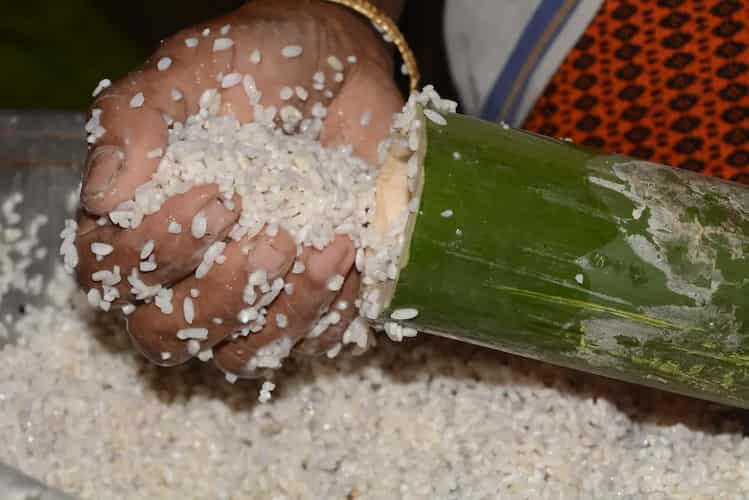Northeastern India is home to a traditional Assamese morning meal known as jolpan. Rice flakes or beaten rice, curd, and other toppings including pickles, chutneys, and fruits are often included. Once softened, the rice flakes or beaten rice are served with a dollop of curd and the toppings of your choice. It is a tasty meal that is filling, light, and nutritious for all ages. A delightful texture contrast is created by the creamy, acidic curd and the soft, fluffy rice flakes. The several toppings give the dish a variety of flavours and scents, making it a genuinely filling and delectable breakfast alternative.
In Assam, jolpan is typically eaten with tea or another regional beverage and is regarded as a significant component of the morning meal. Families all around the area appreciate this dish because it is easy to make at home. Jolpaan doesn't require cooking. A snack, breakfast, or mini-meal called jolpan typically contains different types of rice.
In addition to curd, jaggery, yogurt, and various Pitha, variations on jolpan include Bora saul, Komal Saul, Xandoh, Chira, Muri, and Akhoi.
Bora saul: Boiling the bora saul prepares it for jolpan, which is then served with curd, milk, jaggery, or sugar.
Kumol Saul: An unusual variety of rice from Assam called kumol saul can be consumed raw. After being briefly submerged in water, it becomes fluffy and delicious. After soaking the rice in warm water for only a few minutes, it can be consumed with milk, curd, jaggery, or yoghurt.

Xandoh: Kola, Ghiu, Pakhi, or Ronga bora are used to prepare it (varieties of Bora saul). After being soaked for three to four days, the rice is subsequently fried. The fried rice is pounded and dehusked in an Assamese dheki, a handcrafted wooden mill used to pound grains. Hurum is made by refrying the rice that has been crushed and dehusked in hot sand. It is offered with yogurt, heated milk, sugar, jaggery, or curd.
Chira: Dehusked rice that has been flattened into thin, dry flakes is referred to as chira (also known as beaten rice). These rice flakes absorb water, milk, and other liquids, causing them to swell when added to a drink, whether it is hot or cold. It can be consumed raw by dipping it in simple water, milk, or curd, seasoning it to taste with salt, sugar, or jaggery, or lightly frying it in oil.
Muri: In order to make muri (puffed rice), rice grains are added to a saucepan of heated sand. In order to season the rice, it may be washed in brine. The sand and rice are separated by a strainer when the rice puffs up.
Sunga Saul: Argai bora saul is soaked for two to three hours after it has been dehusked. It is then placed in a young bamboo tube and given a little water or occasionally coconut milk. As a cork, banana leaves are utilised. Sunga saul is made after the tube has been roasted in the fire. When the tube is removed, it is served with yogurt, hot milk, sugar, and curd.


